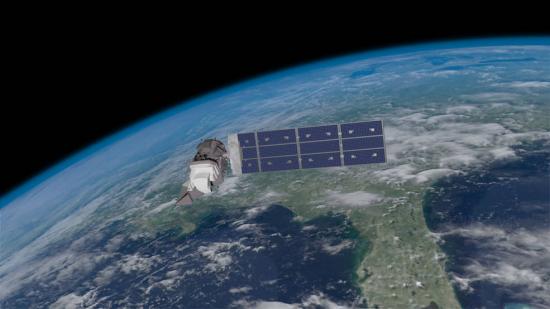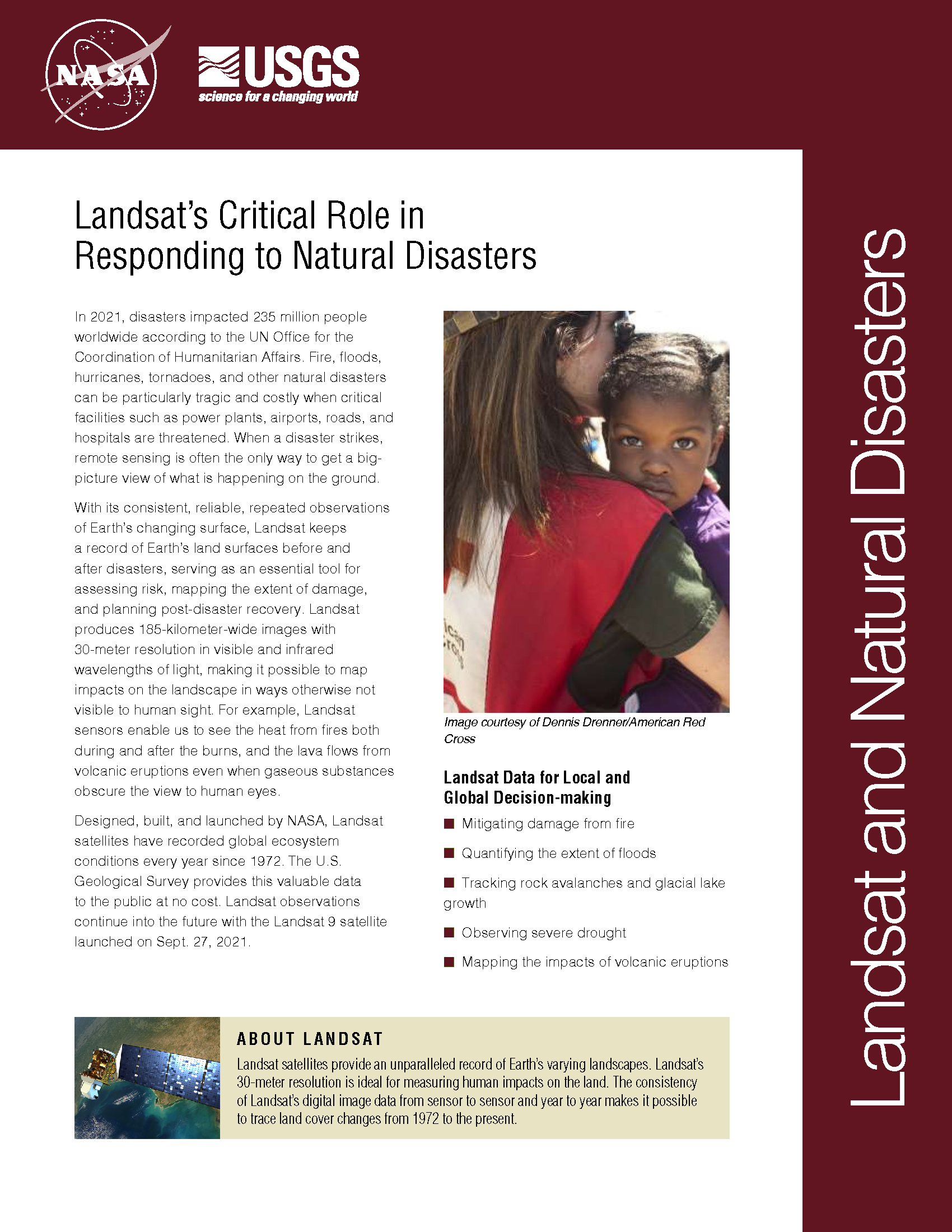Landsat's Role in Responding to Disasters
In 2022, the Emergency Events Database (EM-DAT) reported 387 natural hazards and disasters worldwide, resulting in the loss of over 30,000 lives and affecting more than 185 million individuals. Economic losses totaled around US$223.8 billion. Fires, floods, heat waves, drought, hurricanes, tornadoes, and other natural disasters can be particularly tragic and costly when critical facilities such as power plants, airports, roads, and hospitals are threatened. When a disaster strikes, remote sensing is often the only way to get a big-picture view of what is happening on the ground. With its consistent, reliable, repeated observations of Earth’s changing surface, Landsat keeps a record of Earth’s land surfaces before and after disasters, serving as an essential tool for assessing risk, mapping the extent of damage, and planning post-disaster recovery. Landsat produces 185-kilometer-wide images with 30-meter resolution in visible and infrared wavelengths of light, making it possible to map impacts on the landscape in ways otherwise not visible to human sight. For example, Landsat sensors enable us to see the heat from fires both during and after the burns, and the lava flows from volcanic eruptions even when gaseous substances obscure the view to human eyes.
NASA 'Fire Towers' in Space Watch for Wildfires
The Black Forest wildfire this June was one of the most destructive in Colorado history, in terms of homes lost. It started close to houses and quickly spread through the ponderosa pine canopies on the rolling hills near Colorado Springs. The wildfire destroyed 500 homes in the first 48 hours and killed two people.
Environmental Monitoring with Public Domain Satellites
WNYC’s Leonard Lopate talks with SkyTruth president, John Amos, about using public domain satellite imagery, such as Landsat, to monitor the environment. SkyTruth uses all types of satellite imagery to monitor environmental changes and disasters; Landsat is prominently mentioned among them.
Using Landsat 8 to Locate Fires in Indonesia
In June, air pollution over Singapore and Malaysia spiked as forests in neighboring Sumatra (Indonesia) burned. Using NASA’s daily fire alerts and official national maps, the fires were located in the vicinity of oil palm and acacia tree plantations. However, the coarse resolution of the fire alerts coupled with outdated national maps, made it hard to establish culpability.

Landsat Images Provide the Gold Standard for New Earth Applications
Images from Landsat satellites provided free to the public by the Department of the Interior’s U.S. Geological Survey were the starting points for “a new breakthrough” reported today by Time and announced
Analyzing Landsat to Mitigate Bird/Aircraft Collisions
The presence of birds near an aircraft runway is a constant concern. Although deadly crashes are rare, a bird strike to the windshield can cause visibility issues for pilots, and
Landsat Shows Yellowstone Burn Recovery
A combination of lightning, drought and human activity caused fires to scorch more than one-third of Yellowstone National Park in the summer of 1988. Within a year, burn scars cast


